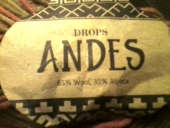
 14
14




Sourdough Without Fail Natural Small Batch Cheesemaking A Year in an Off-Grid Kitchen Backyard Dairy Goats My website @NourishingPermaculture @KateDownham






 16
16




Visit Redhawk's soil series: https://permies.com/wiki/redhawk-soil
How permies.com works: https://permies.com/wiki/34193/permies-works-links-threads
 4
4




Sourdough Without Fail Natural Small Batch Cheesemaking A Year in an Off-Grid Kitchen Backyard Dairy Goats My website @NourishingPermaculture @KateDownham






 11
11




 6
6




Invasive plants are Earth's way of insisting we notice her medicines. Stephen Herrod Buhner
Everyone learns what works by learning what doesn't work. Stephen Herrod Buhner
 11
11




Gardens in my mind never need water
Castles in the air never have a wet basement
Well made buildings are fractal -- equally intelligent design at every level of detail.
Bright sparks remind others that they too can dance
What I am looking for is looking for me too!

 9
9




Our inability to change everything should not stop us from changing what we can.
 6
6




I do the same - I even ask non-farm people to save their dead jeans specifically to harvest that fabric for this purpose. Sewing from seam-line to seam-line actually makes it look neater in my opinion than a smaller patch does. If you want it to look "pretty" some fancy embroidery serves to join the inside and outside fabric together as well as making a fashion statement - if you can't hide it, flaunt it!So when a knee goes out, I use the back of pant legs to make one patch that covers the front of the leg from below the knee up to a couple inches below the pocket.
If it's just the bottom seam, again, if I'm building from scratch I often do a double seam for at least the bottom 1/3 of the pocket. I *really* like the pockets that are made with a double layer of fabric for the bottom third, as people who carry around keys and tools, may blow the pocket higher up.I carry a lot of stuff in my pockets and have pocket blow out.
Visit Redhawk's soil series: https://permies.com/wiki/redhawk-soil
How permies.com works: https://permies.com/wiki/34193/permies-works-links-threads
 7
7




Robert Ray wrote:I carry a lot of stuff in my pockets and have pocket blow out. I pullout the pocket and use one of the iron on patches to reinforce the pocket.
Gardens in my mind never need water
Castles in the air never have a wet basement
Well made buildings are fractal -- equally intelligent design at every level of detail.
Bright sparks remind others that they too can dance
What I am looking for is looking for me too!

 10
10




Weeds are just plants with enough surplus will to live to withstand normal levels of gardening!--Alexandra Petri
 9
9




Mk Neal wrote:I love my silk blouses, but sweat breaks down the fibers and I find myself needing to mend the underarms when the rest of the garment is just fine. I had actually just been thinking last week that I should start to preemptively sew patches on the inside to avoid the fabric breakdown.
Nonprofit Fundraising Consultant
Consensus Facilitator
 12
12




 9
9




 7
7





 7
7




 5
5




The downside of "cheap" - the costs are hidden.Gray Henon wrote:I used to reinforce, mend, and patch pants. As previously mentioned, they just tend to blow out somewhere else. The local thrift store has pants for $3-4. Hardly worth the time and effort when I can get them for that.
Visit Redhawk's soil series: https://permies.com/wiki/redhawk-soil
How permies.com works: https://permies.com/wiki/34193/permies-works-links-threads
 4
4





 6
6




Our inability to change everything should not stop us from changing what we can.
 3
3





 7
7




Zone 6, 45 inches precipitation, hard clay soil




 6
6




“The most important decision we make is whether we believe we live in a friendly or hostile universe.”― Albert Einstein
 3
3




A picture would be helpful. I haven't owned such a garment, but I'm wondering what it would look like if you just removed all the flannel carefully. If you then felt the need for outer pockets, I'd find some fabric to salvage that went with the remaining hoodie, and sew patch pockets on.John Weiland wrote: In the two of these shirts that I've had, the flannel just starts to fall apart. Not just the pockets, but any small tear begins to expand and pretty soon the whole appearance of the garment and function of the pockets is tattered and annoying.
Visit Redhawk's soil series: https://permies.com/wiki/redhawk-soil
How permies.com works: https://permies.com/wiki/34193/permies-works-links-threads
 7
7




“The most important decision we make is whether we believe we live in a friendly or hostile universe.”― Albert Einstein
 2
2




John Weiland wrote:
This is somewhat different, but here it comes;
I would replace the hoodie with one size bigger men's long sleeve shit, what ever the fabric might be , and tack it (either by using sewing machine or by hand) over the existing hoodie's seams. However, If the existing fabric is coming off at the seams, I would cut THOSE pieces off , including the breast pockets to eliminate bulk, close to original seams (those attached and sewn by manufacturer).
I am speaking for myself here....Unless I /we, were invited to black tie event, I/ HE would not wear it but.....around the house, for doing yard work...I don't care LOL
P.S. I did similar replacement for my "ugly half" just this way because he was (is) attached to "his twin hoodie" but don't have pictures.

| I agree. Here's the link: http://stoves2.com |






